What’s life like for LGBT people in India after the decriminalisation of homosexuality?
India finally moved with the times when it ended a colonial-era ban on homosexuality last September. Thomas Stichbury finds out what impact the ruling has had.
By Will Stroude
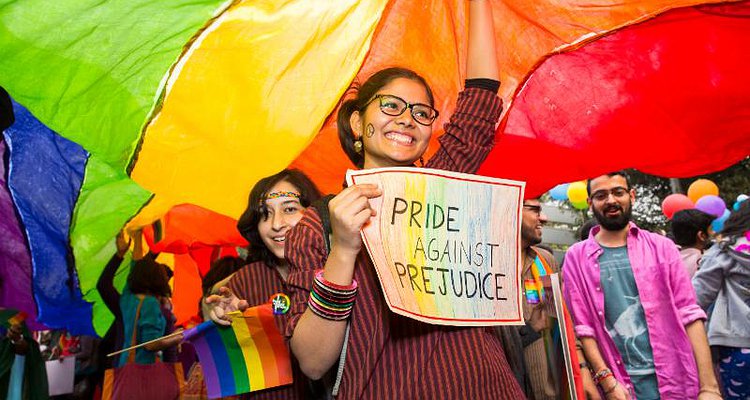
This articel first appeared in Attitude issue 304, January 2019.
Most people feel the fluttering of butterflies in their belly at the prospect of exploring far-flung lands. But not me, oh no! My stomach ties itself into so many knots that it ends up resembling a prize-winning pretzel.
resembling a prize-winning pretzel. I have never been bitten by the travel bug. Barely even been nibbled for that matter. It’s not because I’m scared of flying, or ignorant of other cultures, I genuinely love going to new places and meeting different people. Trust me, I grew up in and around Essex, so chatting to anyone who resists the urge to insert “babe” after every third word is always refreshing.
The problem is I’m cursed. I must have seriously pissed off St Christopher in a past life because, whenever I leave the UK, something calamitous happens.
So much so that family, friends and colleagues have all expressed concern about going abroad with me. To quote my favourite philosopher, P!nk: “I’m trouble, yeah, I’m trouble now, I’m trouble y’all.”
So when the opportunity arose to visit India, specifically its capital New Delhi, followed by the city of Kolkata, I confess to being more nervous than usual. There were the many vaccination jabs to consider, for example, prompting a pal to reassuringly remind me that she spent weeks in hospital after contracting dengue fever there. Or the warnings about not drinking tap water and avoiding certain foods so you don’t catch Delhi belly – translation: the shits.
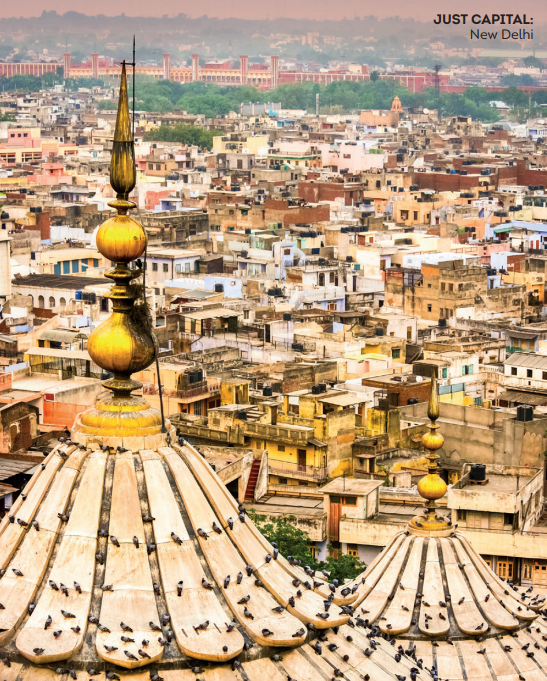
Just capital: New Delhi
Those trickles of trepidation only intensified when a quick Google search revealed that, at the point of being offered the trip and accepting the invite, it was still illegal to be homosexual in India.
In 2009, Delhi’s High Court decriminalised gay sex, but four years later it was recriminalised. I’m about as straight as a sequin, so, rocketing from zero to 100, my imagination leapt to the worst possible scenario: being stuck in prison with the trots, with no access to my Delhi belly prevention kit, which I actually remembered to buy — for a maharaja’s ransom!
However, my internal alarm bells dulled a few weeks before I was due to fly when India’s supreme court overturned Section 377 of its penal code, a colonial-era law inherited from Britain that made “carnal intercourse against the order of nature” a criminal offence.
Homosexuality was no longer banned and, pretty much for the first time in 158 years, the constitutional rights of LGBT+ people, who make up approximately eight per cent of the population, were recognised.
Five judges, chief justice Dipak Misra, and justices AM Khanwilkar, DY Chandrachud, RF Nariman and Indu Malhotra, ushered India into the 21st century with the landmark 493-page ruling.
“There must come a time when the constitutional guarantee of equality and inclusion will end the decades of discrimination practised — that time is now,” Chandrachud wrote.
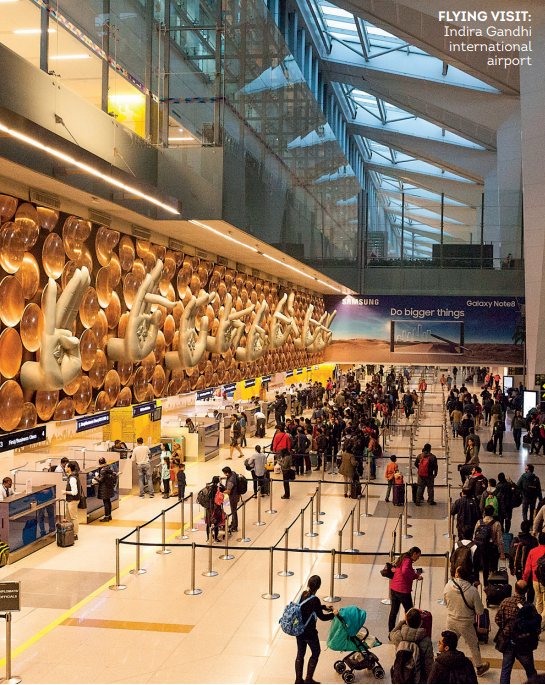
Flying visit: Indira Gandhi international airport
“Our constitution, above all, is an essay in the acceptance of diversity. It is founded on a vision of an inclusive society which accommodates plural ways of life.” Selfishly, that was one less thing to worry about, and my stomach unravelled ever so slightly.
The long-overdue lifting of the ban also gave my trip a sense of real purpose, evolving from the proposed hotel review to offering an insight into the lives of gay men in India, and how those may or, as I discover, may not, change in the wake of the legal milestone.
Frosty reception
After enduring an eight-hour flight, having squeezed my gangly, gazelle-like limbs into the dreaded middle seat on the plane, I receive a far-from-warm welcome going through immigration at Indira Gandhi international airport, in New Delhi. In fact, it is downright frosty. The officer summons me with a slap of a hand on his desk, before waggling his fingers in front of my face. “I don’t like this,” he states.
“Sorry?” I reply.
“Your nose piercing, it’s for girls,” he grumbles.
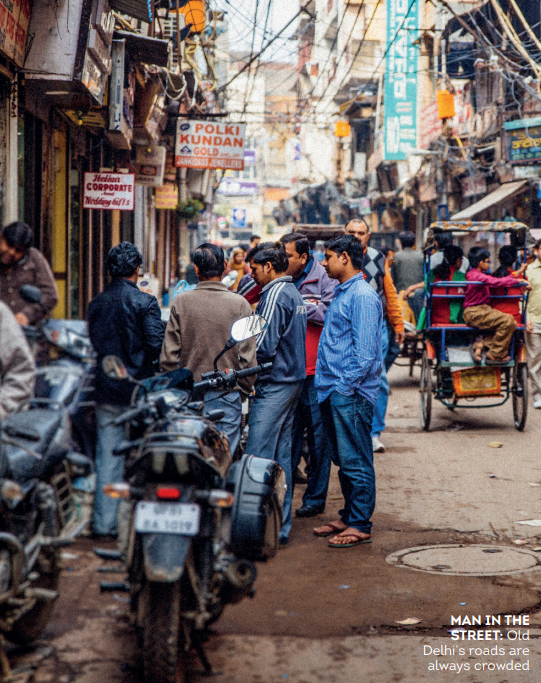
Man in the street: Old Delhi’s roads are always crowded
I politely inform him that, in the UK, both sexes wear nose rings, prompting him to sneer: “Ah, you’re a feminist.”
“Yes, yes, I am,” I counter.
Not the greatest of starts, that’s for sure. Having applied a quick squirt of Deet spray — mosquitoes, I’m ready for you – I join a small group of journalists and head outside, to be greeted by the clothes-soaking humidity, before sliding into a waiting car.
You read about New Delhi, home to 25 million people, being a cacophony of sights, sounds and smells, and that sentiment rings true even in the short journey to our accommodation: bustling roads with drivers honking every milli-second, traffic grinding to a halt to let a cow pass by at a roundabout. Holy creatures have right of way, of course.
Arriving at The Park New Delhi, a five-star hotel located in the heart of the city, there is enough time to dump bags in my swish, spacious room, take a shower and resist the urge to climb into the all-too-inviting double bed, before being taken on a tour of the local area. I ask our guide what, if any, gay scene there is here, and she tells me that The Park happens to run an LGBT-friendly night. My stay doesn’t stretch long enough for the next one, which is a shame.
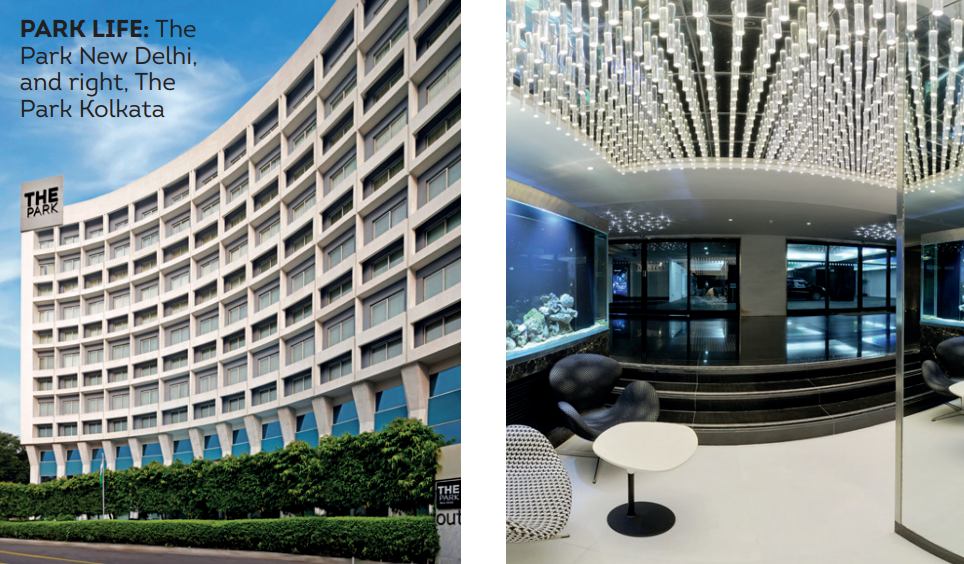
Park life: The Park New Delhi, and right, The Park Kolkata
We pause outside the mighty Red Fort, an imposing 255-acre structure that was once home to emperors of the Mughal dynasty until 1856. If I ever own a property (an increasingly unlikely proposition), I definitely want bastions and turrets. Just saying.
Our pit-stop is cut short by a heavy downpour and, having forgotten to pack my brolly, I take shelter underneath a bush. It doesn’t provide expansive coverage. Sopping wet realness.
With the shower passing and the sun beating back down, we set off in search of some tastebud-tingling street food, scoffing delicious gol gappa, which are balls of fried dough filled with savoury water, followed by falooda kufi — a noodley concoction served with ice cream that tastes as weird as it sounds — and parcels of paan, betel-leafwrapped palate cleansers that successfully do the job.
As I walk around, dodging the many dogs passed out on the pavement due to the heat, I’m struck by the many men walking around holding hands. “Wow,” I muse, “the law really has brought about change, look how open and affectionate these guys are.”
But, no, my gaydar is wildly off, and I’m informed that this is a cultural norm, a marker of heterosexual male friendship.
With no strip of gay bars or clubs to speak of, I turn to a reliable source to help locate the queer community: Grindr.
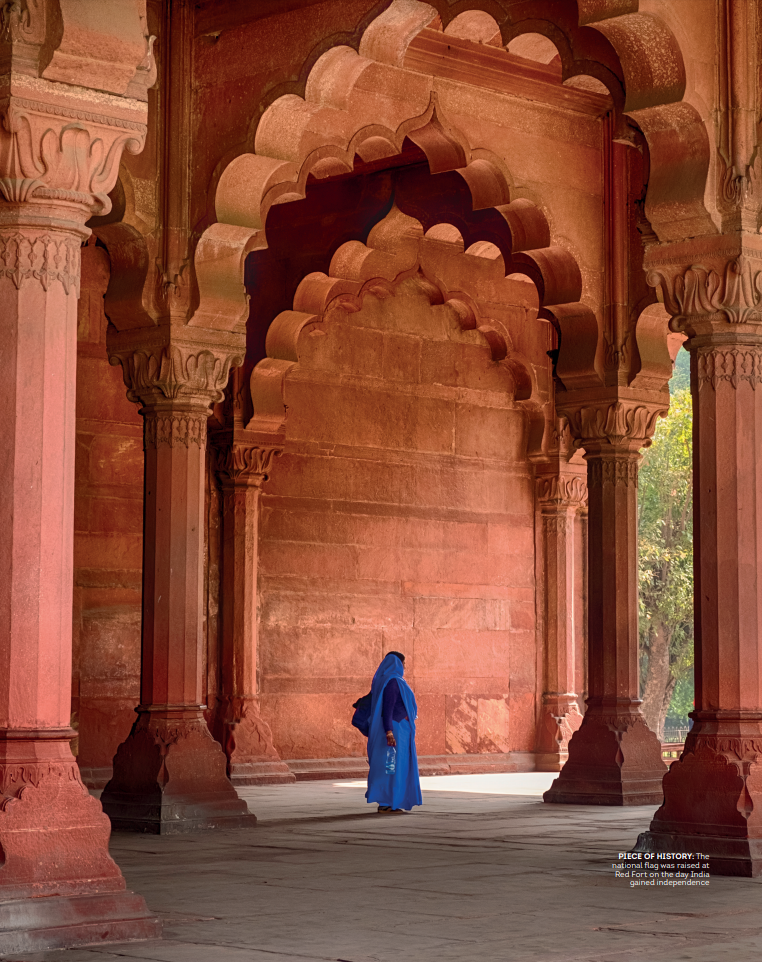
Piece of history: The national flag was raised at Red Fort on the day India gained independence
Back in my room — after being treated to a spread of the hotel chef’s signature dishes — I strike up a conversation with Venkatesh, a 32-year-old LGBT+ activist who has already attended 15 Prides across India this year.
We decide to speak via WhatsApp video. Oozing confidence, and sporting fabulous multi-coloured nails, he tells me that he has never felt pressure to conceal his sexuality and that the ban was more of a technicality as opposed to something actively enforced.
“I didn’t face any issues. On the whole, my family have been supportive although my dad has a ‘don’t ask, don’t tell’ policy and won’t join Pride. My mum walks it, though,” Venkatesh says.
“I accepted my sexuality confidently. I’m an outrageous person — the nose pin, the jewellery and the fingernails. I can be really manly at times, but I can also walk down the roads of India with the elegance of a queen. People stare but I don’t care. I tell them that they don’t have as much sexiness and hotness as I do,” he grins.
I ask Venkatesh, who works in the stock market, if he has experienced any form of harassment, violence, or even blackmail in the past as a result of his sexuality. “It’s India, you have challenges, you face discrimination and you hear people say things but my motto is: do whatever the fuck you want.”
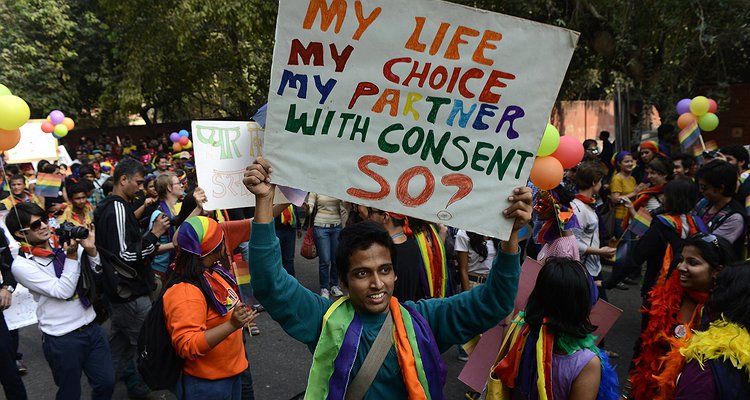
While he welcomes the scrapping of Section 377, he points out that more needs to be done to combat homophobia in rural areas.
“I’ve been focusing my activism on small towns where acceptance is not at all there,” he adds, “I try to make them understand.”
Hustle and bustle
The following day is spent diving into Old Delhi as we hitch rickshaw rides into Spice Market. Hustle and bustle doesn’t even begin to describe the scenes: little kids clinging on to the back of carts on their way to school, people winding through a labyrinth of passageways doing their shopping, men — young and old — lugging bricks on their backs up steep stairwells, and everywhere you turn bags filled with vibrant spices, so powerful they sting your nostrils. I reckon that even when I’m back in Ol’ Blighty, if I wrinkle my hooter hard enough, I’ll still smell them.
I even spot a monkey perched on a rooftop. David Attenborough, eat your heart out.
The main religions here are Hindu, Sikh, Muslim and Christian, and taking a breather from the colourful chaos, we venture to Jama Masjid, one of India’s biggest mosques, built by emperor Shah Jahan between 1644 and 1656. Mimicking what everyone else is doing around me, I remove my shoes and socks, and wander into the central square which is swarming with devotees and children splashing about in leftover rain puddles.
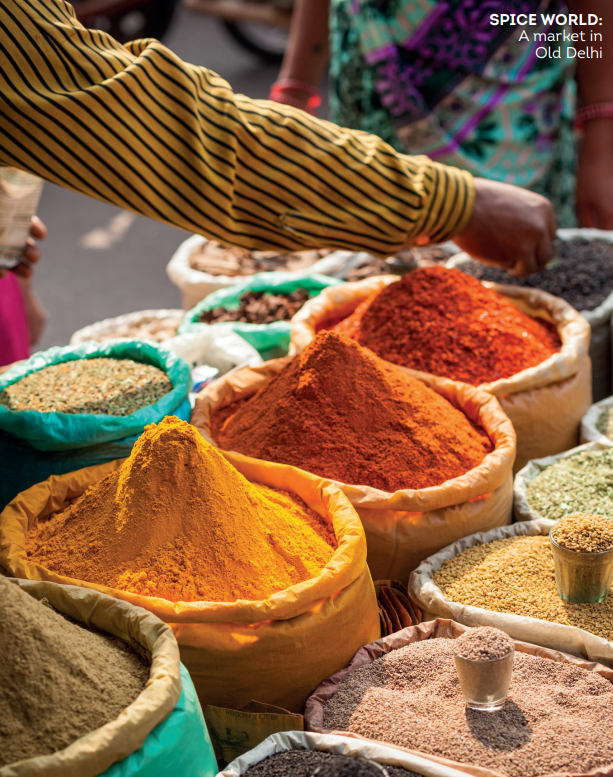
Spice world: A market in Old Delhi
Having built up an appetite, we’re led to Karim’s, a seemingly unassuming eatery that’s more than 100 years old and one of the most famous restaurants in the region. The food speaks for itself as we stuff ourselves on helpings of butter chicken, succulent mutton stew and fresh-from-the-oven naans. I give the brain curry a miss, though — that sounds too much like a bushtucker trial.
My stomach is well and truly lined for the evening’s celebrations as The Park Delhi marks its 50th anniversary with a pull-outall-the-stops party. We’re talking free-flowing champagne, ice sculptures and a decadent flower wall that would make even Elton John envious.
Taking a cheeky cigarette break, I cross paths with an openly gay designer who grew up in New Delhi.
“I have never made a secret of it, but then again I’ve been lucky to have a very understanding family and set of friends,” he says. “I was always accepted, but maybe the overturning [of the law] will help those who still frown on it.”
His friend, meanwhile, reveals that there is a local cruising spot just a stone’s throw away from the hotel. That, however, is not on the itinerary.
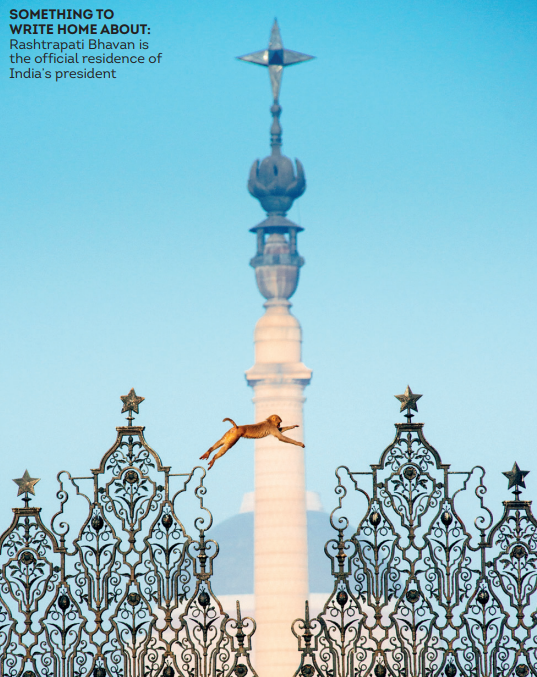
Something to write homes about Rashtrapati Bhavan is the official residence of India’s president
Nudged awake Part two of my Indian adventure begins with a slight hiccup when post-party I sleep through my alarm. Look, I’m used to being nudged awake by my Lumie light clock. I almost make us miss our connecting flight to Kolkata and, understandably, that annoys a few people. When Chicago’s Cell Block Tango randomly plays on my Spotify, I think the murderous tones are entirely befitting. We make the flight, all is forgiven and my just deserts are delivered when a sachet of powdered creamer explodes in my mouth.
Reaching the largest city in West Bengal — known as Calcutta until 2001 — my first thought is how cosmopolitan and almost Western it is, from the architecture to the fashion, with a majority of the women opting for modern dress rather than traditional saris, the opposite of which is true in New Delhi. I wonder if this sense of modernity has filtered down into their attitudes towards sexuality.
We make our way to The Park Kolkata, screaming slickness with its state-of-theart gym, pool area and multiple on-site nightclubs, and meet one of the hotel’s incredibly chic employees, Chynna. She is giving me serious Posh Spice by-way-of-theeast vibes, and I want to be her when I grow up.
Sticking to a packed schedule, we head to Mother House, a sober, grey-coloured building where Mother Teresa lived, prayed and eventually died in 1997. It remains the headquarters of the Missionaries of Charity, where the sisters carry on her good work.
One nugget of information discerned is that, despite the torpid temperature, the canonised nun never used a fan while carrying out her correspondence from a bedroom above the kitchen.
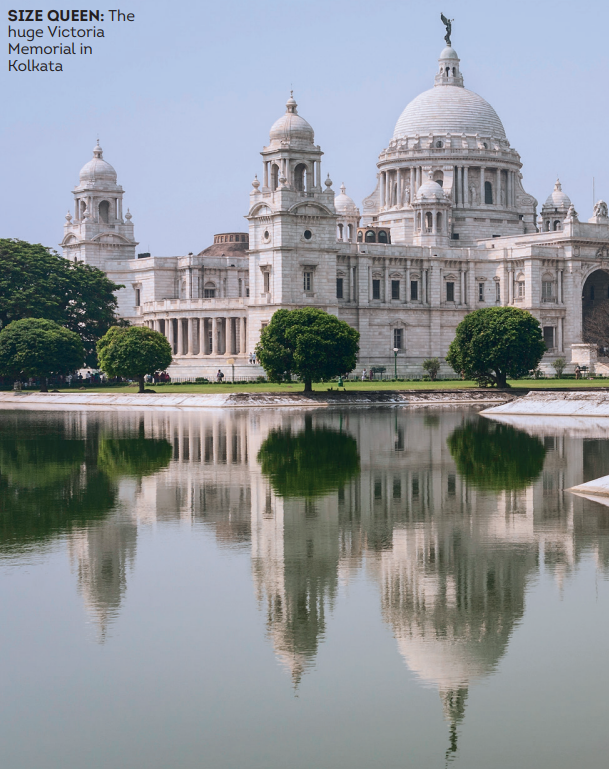
Size queen: The huge Victoria memorial in Kolkata
As we leave, we’re handed a pamphlet emblazoned with Mother Teresa’s face, and one of the journos, a sweet lady from Scotland, starts wafting it to cool herself. I can’t resist pointing out the irony that, while Teresa never used a fan, not once, she was using Teresa to fan herself. “God’s going to going to smite me!” she shrieks.
Next on the agenda is the Nirmala Sishu Bhavan orphanage, run by the Missionaries, and home, at this point, to 54 children. Open to tourists, you enter a cot-lined room filled with babies and toddlers, while another section of the establishment is devoted to the care of handicapped youngsters dumped at their doorstep, or reluctantly handed over by parents who can’t afford to look after them.
It is the only part of the trip that I don’t feel comfortable with. While there is no doubt whatsoever that the work being done is incredible, I can’t help but feel like a privileged Westerner, witnessing the struggles and extending sympathies before being whisked back to all-too-literal luxury.
Heck, the next day we are treated to a champers-filled boat ride across the Hooghly river for the re-opening of the oldest hotel in India, the 232-year-old Denmark Tavern. That juxtaposition doesn’t sit easily with me.
But back to the matter at hand. I pick my new BFF Chynna’s brain about this new era of respect and rights for the LGBT+ community, and it transpires that the hotel threw a bells-and-whistles do in honour of the ruling.
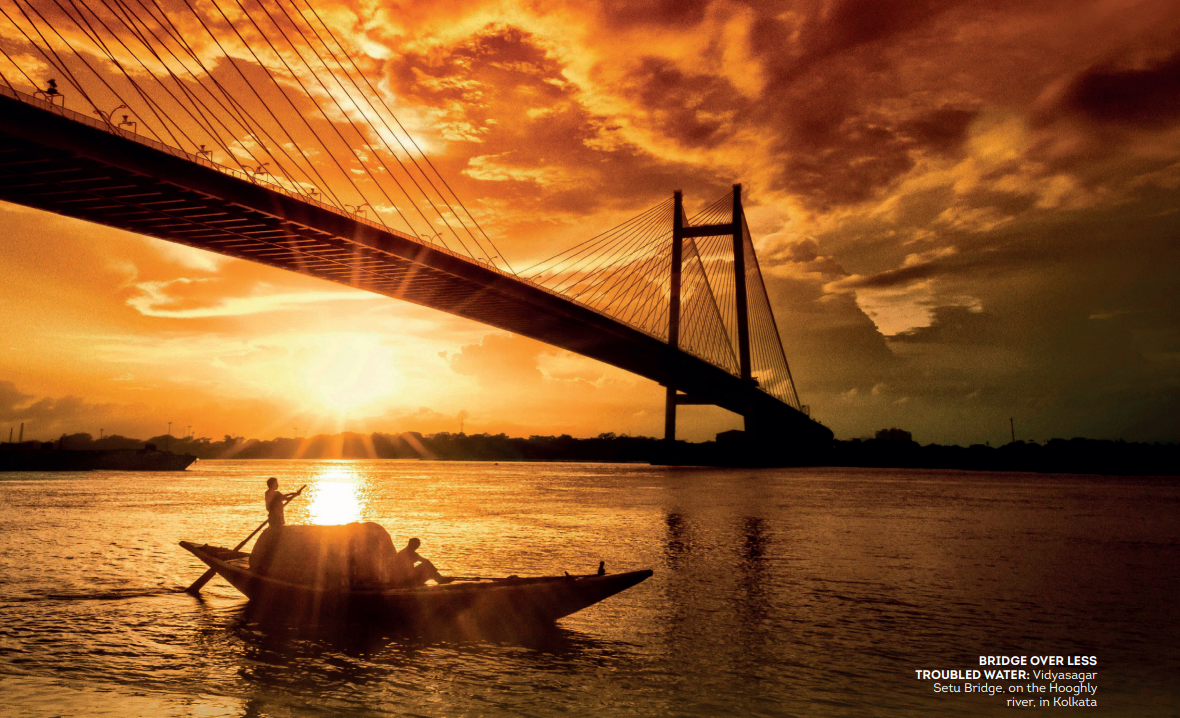
Bridge over less troubled water: Vidyasagar Setu Bridge, on the Hooghly River, in Kolkata
“We’re just celebrating love,” she says, “I have so many gay friends. It has taken Kolkata a few years to catch up, for people to feel comfortable being in the open. That was difficult eight or nine years ago.”
Unfortunately, that optimism isn’t matched by a couple of the local gay men I speak to, both of whom are struggling to wear their sexual identities with pride. One guy, a practising Muslim, who chooses to disclose neither his name nor age, insists that the change in the law will not affect him.
“I have no intention of coming out of the closet,” he says, citing his religion as the main reason. He adds that his only escape will be in the form of the occasional discreet Grindr hook-up.
A similar school of thought is provided by a 30-year-old university professor who also wishes to remain anonymous.
He is out to his nearest and dearest, but closeted (or at least tries to be) at work, and expresses real doubts about whether the quashing of Section 377 can spark significant progress because homophobia is so ingrained in Indian society.
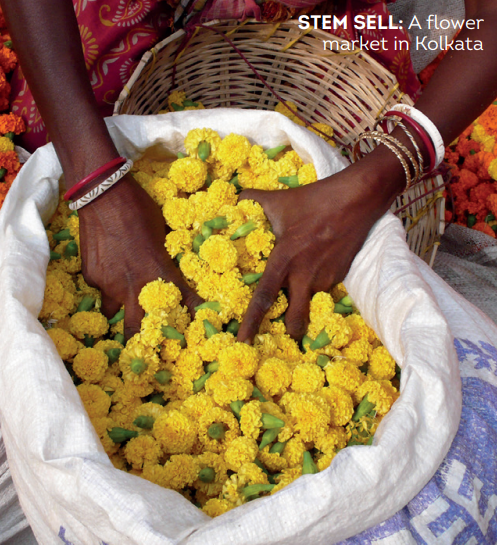
Stem sell: A flower market in Kolkata
“As I was growing up, the thing that concerned my parents, relatives and friends was my increasingly effeminate behaviour,” he says. “Our society still stigmatises adolescents who are not manly enough. Even after my family came to know about the decriminalisation, they reminded me that society doesn’t approve of my kind.
“The law [will] have no positive effect. On the contrary, homophobic ragging and taunts [will] increase. Unaware young people are saying that homos will now squeeze their arses in public, that children aren’t safe any more, that social structure will perish… this is a country whose people can’t even differentiate between paedophiles and homosexuality,” he argues.
The young academic then recalls being outed by a colleague after being spotted marching at Kolkata Pride.
“Pictures of me walking in Pride were downloaded [by a peer] and circulated behind my back. I am a laughing stock to them. I experience homophobia every day.”
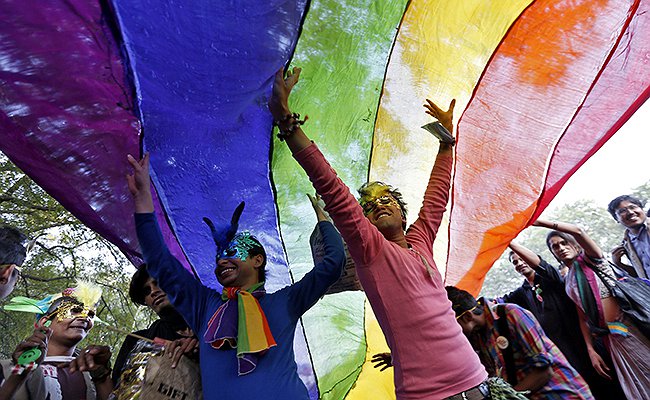
Finishing on a hint of a hopeful note, however, he concludes: “Maybe all will fall into place some day.”
Privileges
Musing on the flight back to London, this time in a far-more-accommodating aisle seat — have we kissed and made up, St Chris? — it’s difficult not to reflect on just how easy I have it as a gay man in the UK: the freedom and privileges that I all-too-often take for granted.
India may be an incredible place but it is still at the beginning of its journey of acceptance and has a long way to go but maybe the next thud of the gavel will be to award same-sex couples the right to marry.
Whatever the case, I’ll be keeping a close eye on the progress being made, and it be would rude not to revisit one day. I mean, my Delhi belly pouch remains unopened so is totally usable on a return trip. Surely that’s a sign…
Rooms at The Park New Delhi start at £100 per night, and at The Park Kolkata from £80/night. Rates at The Denmark Tavern start at £115/night theparkhotels.com
